Customer co-creation is the process of involving customers directly in ideation, design, development, and improvement of a company’s products or services.
By collaborating alongside customers, companies can identify gaps in their offerings, make improvements that genuinely fit customer needs, and uncover fresh, innovative ideas with the potential to disrupt the industry.
In this article, we share our proven methodology for productive customer co-creation, backed by 15 years as innovation consultants.
Here’s how we build these systems:
Create a clear innovation strategy highlighting critical priorities where customer input matters — and make it easy for customers to access.
Invite engaged customers to review the strategy and share their ideas.
Let customers, employees, partners, and other active participants view and collaborate on idea submissions.
Set up the structures and innovation processes to evaluate, prioritize, validate, and implement ideas. Without this, ideas stagnate, customers get frustrated, and they stop co-creating with employees.
Throughout the article, we’ll show how we designed InnovationCast, our innovation management platform, to drive innovation and support the customer co-creation process.
Book a 25-minute demo to learn more about how InnovationCast allows companies to build productive customer co-creation processes.
Step 1: Create a Co-creation Strategy and Make It Available to Customers
A co-creation strategy is a plan that outlines the core objectives and priorities a company wants to tackle through co-creation.
By creating a strategy, companies ensure their co-creation efforts and budgets align with business priorities. The customer co-creation process supports company goals just like any other department or function.
A common mistake we see is launching a co-creation process without first establishing intent and strategy. Many companies set up an idea box — like ideas@companyname.com — and ask customers to share any thoughts, feedback, or product ideas.
While this can lead to improvements, it often turns into a complaint box rather than a system designed to address strategic priorities.
We won’t go into detail here, as we have a dedicated post with our full guidance on creating a co-creation or innovation strategy.
In short, we suggest meeting with stakeholders, understanding their priorities, creating a document that outlines them, and then sharing it with customers. Customers can review each priority, understand where input is needed, brainstorm, and share their best ideas.
You also need to consider how you want customers to contribute: Do you want feedback on current offerings, brand-new ideas, prototype building in hackathon style, or simply help refining employee ideas?
Innovation Challenges Prompt Companies to Clarify Priorities
To help companies approach customer co-creation more strategically, we designed InnovationCast with a feature called Innovation Challenges.
Innovation Challenges are themed posts focused on specific priorities, paired with formal, time-bound invitations for customers to share their ideas.
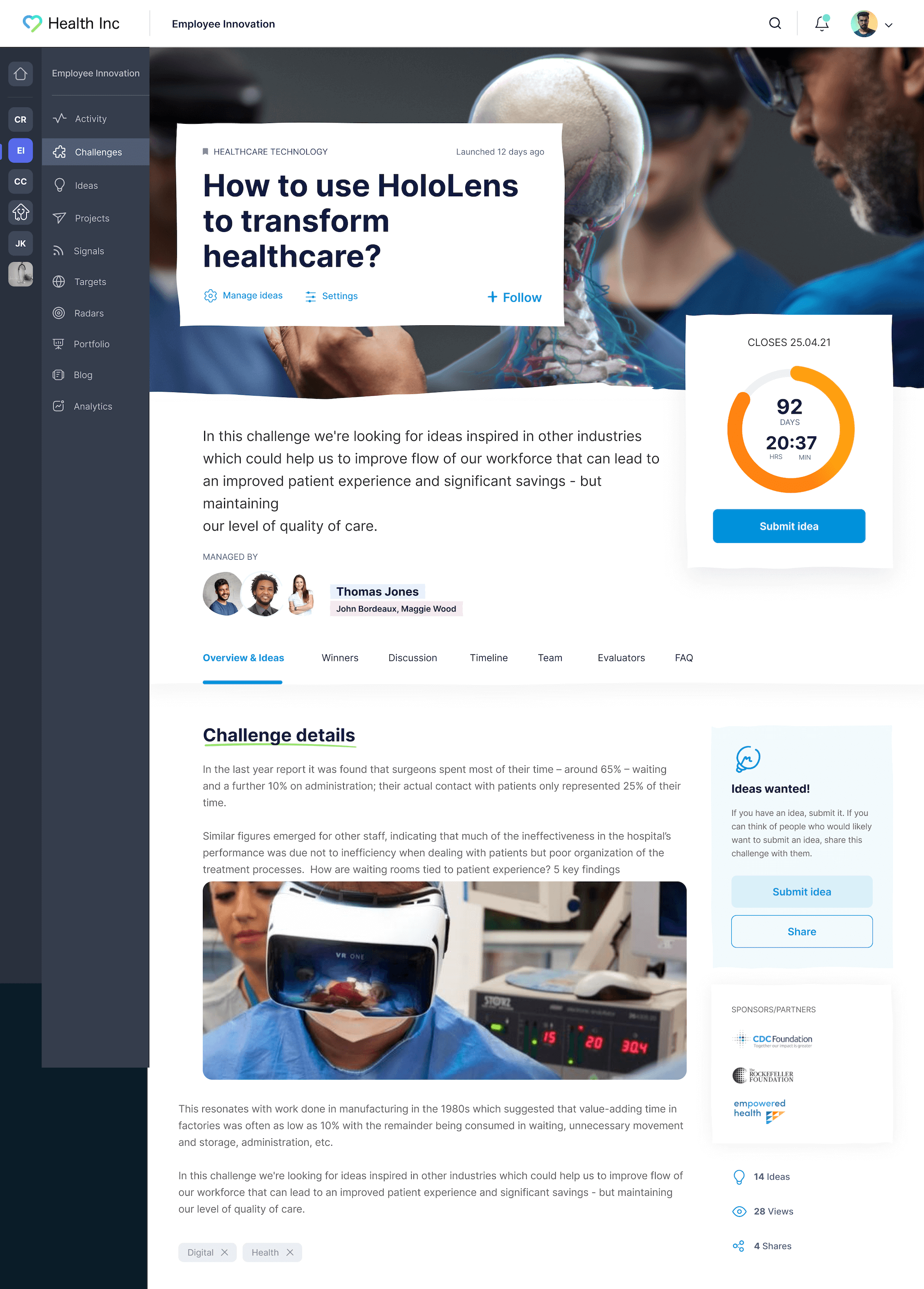
Once you’ve created an innovation strategy, you can publish a challenge for each priority. InnovationCast then prompts your most engaged customers to contribute ideas — and we help design these challenges so you don’t have to start from scratch.
This focuses the brainpower of your most engaged customers on the priorities that matter most.
Plus, InnovationCast aggregates feedback from multiple digital platforms into organized channels, letting you view customer insights across touchpoints without switching tools.
Read more: 5 Detailed Innovation Challenge Examples & Best Practices
Step 2: Collect Customer Feedback, Ideas, Proposals & Prototypes
Once the company is clear on its priorities, the next step is to get customers contributing toward them, effectively leveraging crowdsourcing.
A common strategy is to access your CRM and work with customer support and success to identify your most engaged customers — those completing surveys and volunteering for interviews — and then invite them to respond to challenges.
To boost customer engagement further, companies should clearly communicate rewards for both the winning and runner-up ideas. Cash prizes, exclusive access, and vouchers are powerful incentives.
The single most important advice for lasting customer involvement is to give customers visibility into how their ideas and feedback are handled. It reassures them their contributions matter and aren’t ignored.
Customer satisfaction and involvement quickly fade when customers can’t see what’s happened to their ideas.
Read more: How to Implement an Effective Idea Generation Process in Your Organization
InnovationCast’s Co-Creation Tools Drive Long-Term Customer Involvement
We built InnovationCast with transparency at its core so customers know they’re genuinely involved in shaping the final product.
Ideas, feedback, and prototypes can be tracked right from the InnovationCast dashboard, giving customers clear visibility into their progress.
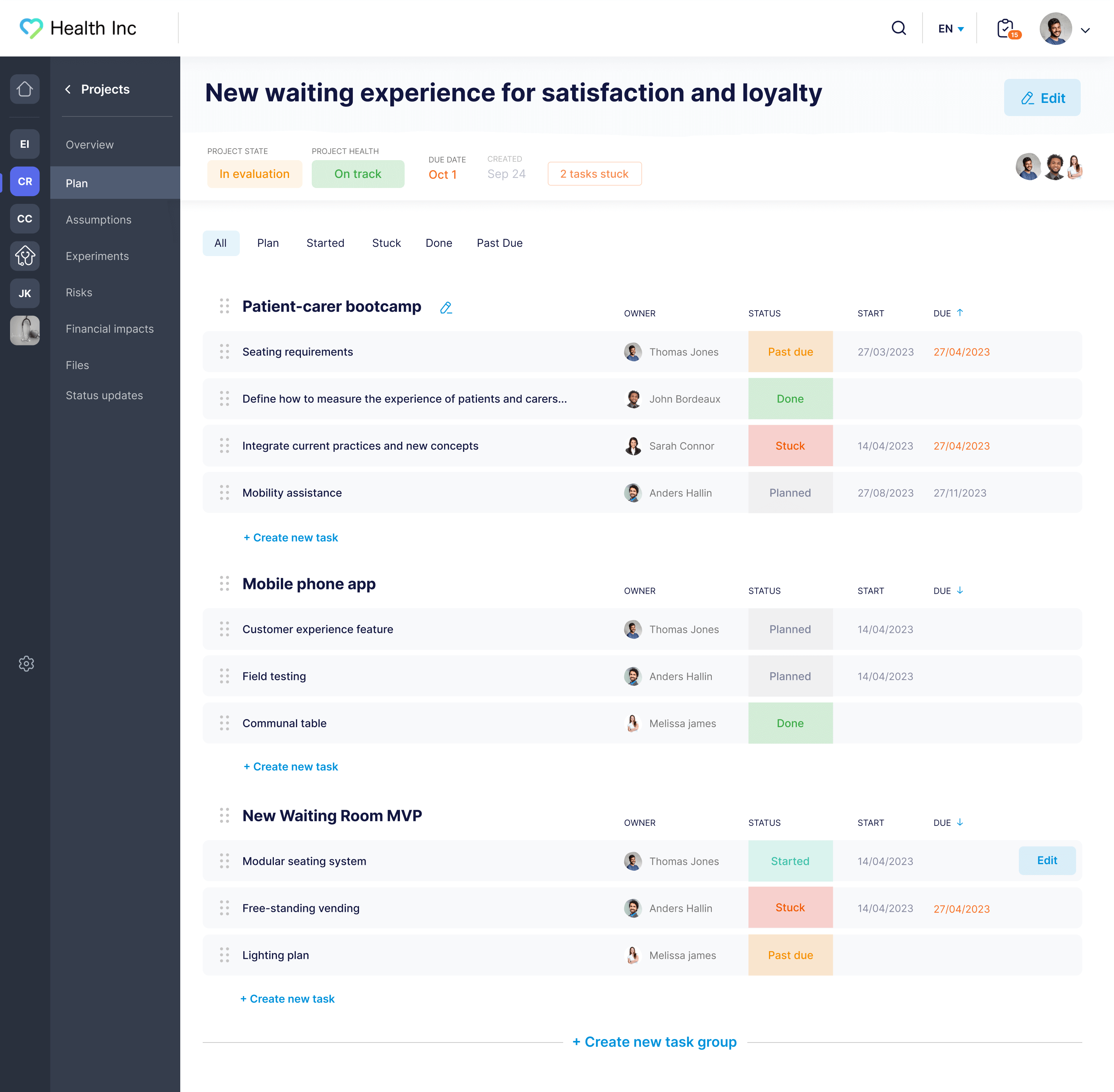
Customers can track ideas from initial ideation through refinement, validation, and all the way to implementation. Depending on the company’s privacy settings, they can also:
See which experiments teams run to test their idea and how it performs against benchmarks — strengthening customer relationships.
Receive email notifications when teams invite them to participate in specific tasks (e.g., interviews, pain point mapping, concept testing, usability testing sessions). This keeps customers involved throughout the product design process — not just the ideation phase.
Access a personalized newsfeed showing all the ideas they’ve submitted and their current status — plus updates on ideas from other customers and employees they follow. (More on this below.)
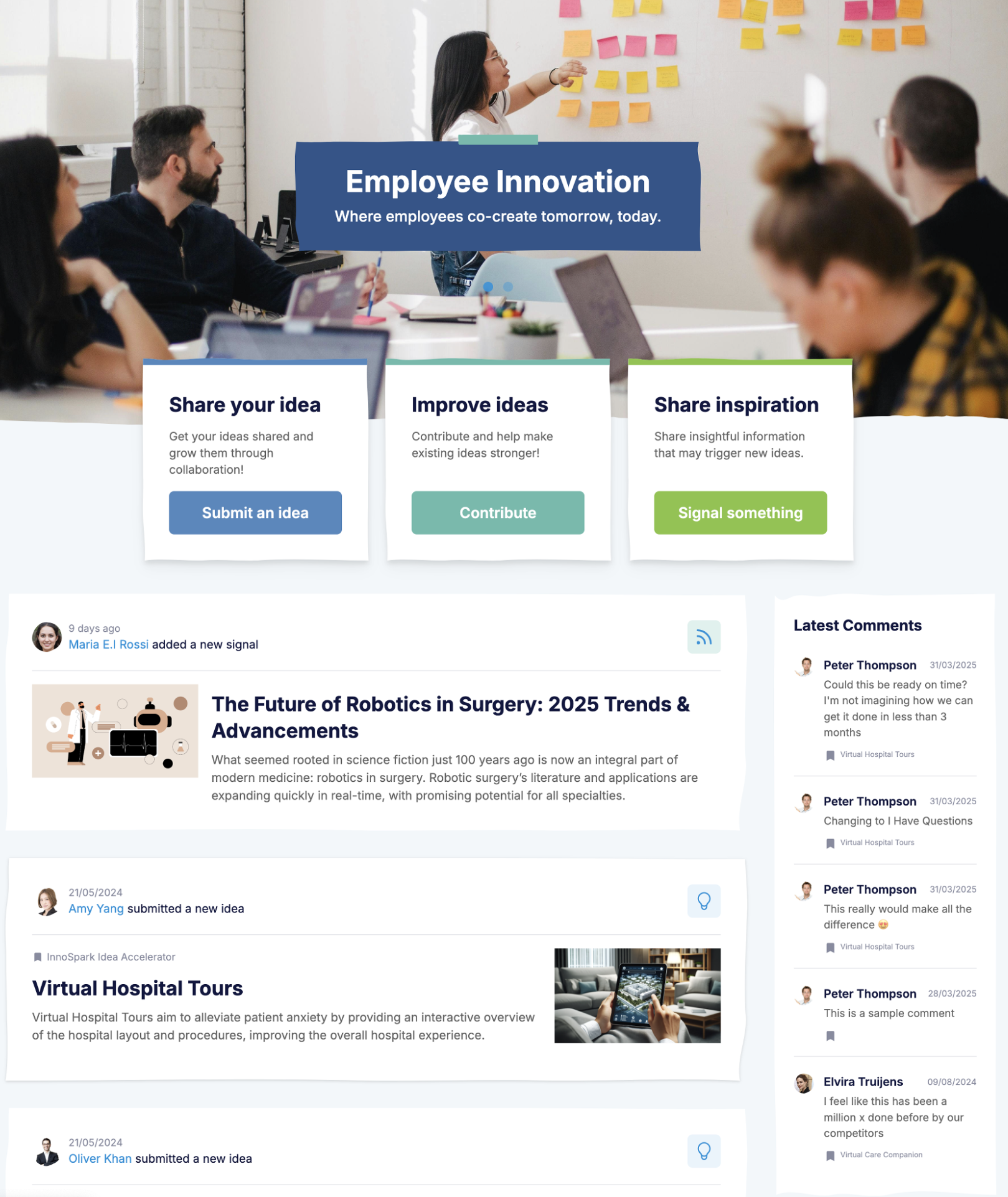
To make it easy for busy customers to contribute, we added a feature called Signals — enabling users to share news, social media posts, potential partnerships, and other insights that align with your initiatives.
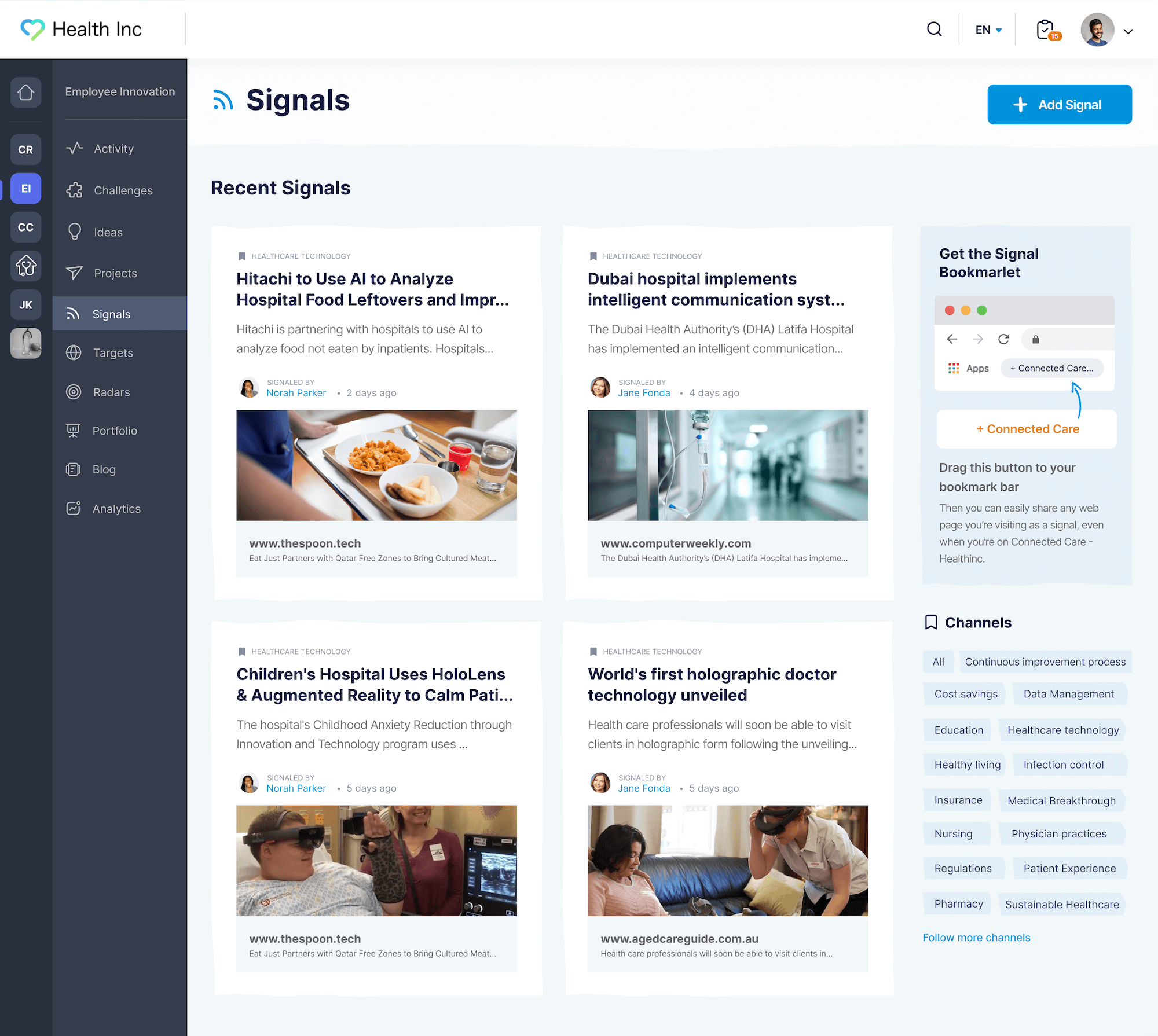
Read more: 5 Best Open Innovation Software + Reviews
Step 3: Get Employees to Co-create with Customers & Strengthen Ideas
Most companies collect ideas via an idea box, web form, email, or an innovation workshop — but customer participation usually ends there. Employees rarely get the chance to review customer ideas, identify issues, suggest improvements, and refine them collaboratively.
As we saw in our VU client case study, this approach can work for small, continuous improvement ideas that involve simple changes and have clear evidence supporting implementation.
However, product innovations where customers share completely new ideas are far more complex. These ideas need to be evaluated from multiple perspectives:
Engineers assess technical feasibility.
Marketers assess market research and brand loyalty.
Finance assesses cost implications.
Since no single customer can consider all these perspectives, without proper refinement, companies end up with undeveloped ideas that aren’t ready for execution.
Effective idea refinement demands a digital workspace where customers and employees can access each other’s ideas, ask questions, provide feedback, and collaborate to improve them.
InnovationCast’s Idea Portfolio Facilitates Idea Refinement
Once ideas are shared, InnovationCast displays them for all users to see.
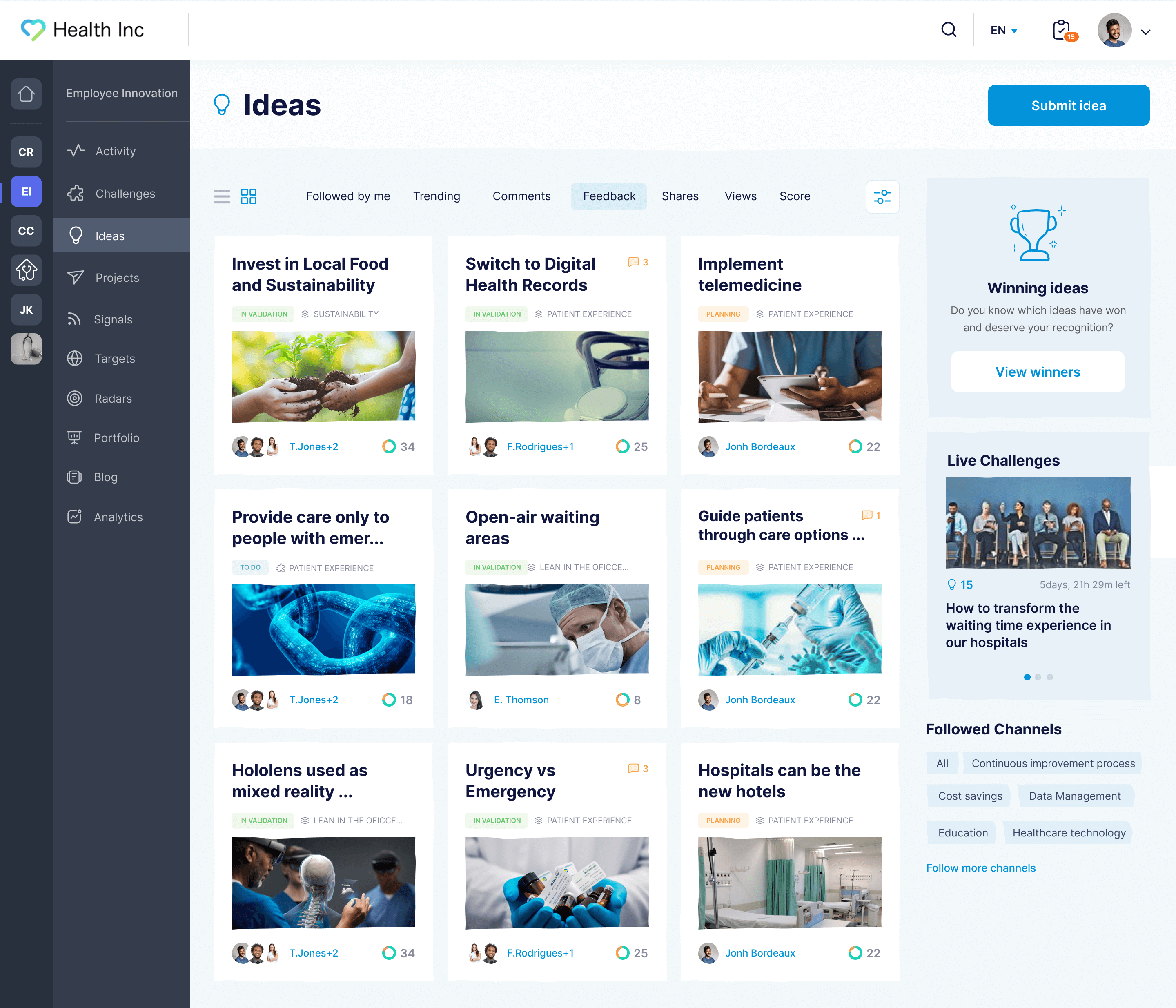
Our voting features encourage users to give clear feedback by clicking “Looks great,” “I have questions,” or “Needs work,” prompting dialogue with the idea author.

But unlike many tools that stop at voting, InnovationCast drives deeper engagement by asking users to explain why an idea is strong or needs improvement.
This builds an active, expert community sharing real insights — not mindless clicks — and lets customers and employees co-design, building on each other’s knowledge to source higher-quality ideas.
To boost engagement even more, authors can tag feedback as a "Significant Contribution” if it profoundly refines their idea. This public recognition rewards commenters and signals to the community that genuine engagement is valued.
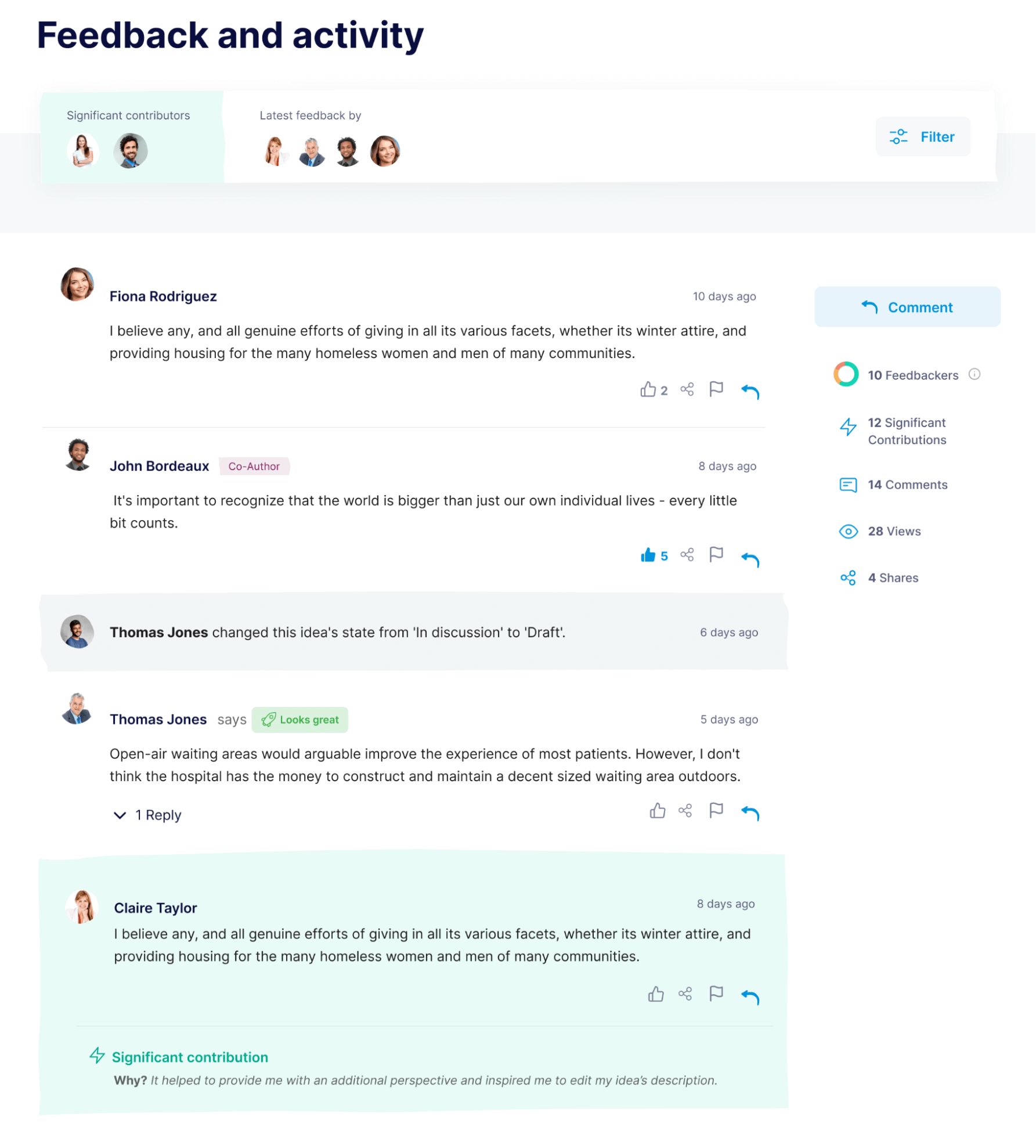
Step 4: Implement Structures to Evaluate, Validate & Launch Ideas
Most companies focus their efforts on collecting ideas from end users but fail to establish the online platforms and systems needed to turn those ideas into real products, services, or improvements. Without this structure, co-creation initiatives rarely deliver ROI.
To support this, companies need well-defined workflows — with clear tasks, assigned personnel, decision-making guidelines, deadlines, and review stages. These should also include opportunities for customers to co-create key aspects of the concept, like testing, design, and the product development process.
Workflows create shared clarity around what’s expected from everyone involved.
For example, when a customer submits a new product idea, a product manager might evaluate it and pass it to a designer to collaborate on the interface design. The idea then moves into validation, where teams test demand, pricing, feasibility, and other factors.
Naturally, a business model or service idea would follow a different path — so companies need tailored workflows based on idea type.
InnovationCast Comes with Built-In Workflows for Every Type of Idea
Once an idea is submitted, it moves through a tailored workflow, notifying the responsible person at each step until it’s ready for implementation.
We’ll set up these workflows during onboarding based on your co-creation goals and initiatives, but you can customize them anytime by adding tasks or stages with specific logic rules — no coding needed.

At each stage, InnovationCast offers detailed templates and guidance to help users complete their tasks — whether it's prioritizing assumptions, designing experiments, scoring ideas, or involving customers through interviews, focus groups, pain point mapping, or retention testing.
We support workflows for all types of co-creation ideas: product, service, continuous improvement, business model, customer experience, and more.
Implement a Successful Co-creation System Within Your Organization Using InnovationCast
Schedule a quick demo with our team to see first-hand how InnovationCast can fit your customer co-creation needs.

